The 1934 Buffalo Nickel value varies significantly based on condition and mint mark. Philadelphia mint coins (no mint mark) range from a few dollars for circulated pieces to over $100 for high-grade uncirculated examples. The 1934-D (Denver) mint mark coins typically command higher prices. Key value factors include the coin’s grade (MS60 or higher), preservation quality, and circulation status. Circulated coins with heavy wear are worth only a few dollars, while well-preserved uncirculated specimens can fetch $30-$100+. Error coins and rare high-grade examples are particularly valuable to collectors. For accurate appraisal, consult a professional numismatist to determine exact grade and worth. The mint mark location is on the reverse side beneath the buffalo.
The 1934 Buffalo nickel represents a fascinating chapter in American coinage history, minted during the Great Depression era when every five-cent piece told a story of economic hardship. If you’ve discovered one of these coins in an old collection or inherited stash, you’re holding a piece that could be worth anywhere from a couple of dollars to several hundred, depending on specific characteristics. Understanding the difference between Philadelphia and Denver mint specimens, recognizing valuable errors, and knowing what grades truly matter will help you determine whether you’ve found pocket change or a genuine collector’s treasure.
Understanding the Two 1934 Varieties: Philadelphia vs Denver Production
The 1934 Buffalo nickel came from two United States Mint facilities, each producing coins with distinct characteristics and values. The Philadelphia Mint, operating without a mint mark identifier, struck 20,213,003 pieces that year. Meanwhile, the Denver facility, marking its coins with a small “D” beneath the denomination on the reverse, produced 7,480,000 specimens.
To locate the mint mark on your 1934 Buffalo nickel, flip the coin to the reverse side showing the American bison. Look directly below where “FIVE CENTS” appears—if you see a tiny “D,” your coin came from Denver. No marking means Philadelphia struck your piece.
The Denver mint coins typically command higher premiums due to their lower mintage numbers. This scarcity factor becomes increasingly important as you move up the condition scale. While a heavily worn Philadelphia piece might fetch three to five dollars, a similarly circulated Denver example often brings six to eight dollars simply because fewer survived.
Production quality also differed between facilities. Denver strikes from 1934 frequently show weaker details on the bison’s head and the Native American’s cheekbone, a characteristic that affects grading but also helps authenticate genuine Denver specimens. Philadelphia coins generally exhibit sharper initial strikes, though decades of circulation have worn most examples down to similar detail levels.
Current Market Values Across Different Grades
The condition grading system determines everything when valuing these nickels. Professional grading services use a 70-point scale, with circulated coins falling between Good-4 and About Uncirculated-58, while mint state pieces range from MS-60 to a perfect MS-70.
1934 No Mint Mark (Philadelphia) Value Chart:
| Grade | Estimated Value |
|---|---|
| Good-4 | $1.50 – $2.00 |
| Fine-12 | $2.50 – $3.50 |
| Very Fine-20 | $4.00 – $6.00 |
| Extremely Fine-40 | $12.00 – $18.00 |
| About Uncirculated-50 | $22.00 – $35.00 |
| MS-60 | $40.00 – $55.00 |
| MS-63 | $65.00 – $95.00 |
| MS-65 | $125.00 – $185.00 |
| MS-66 | $275.00 – $425.00 |
1934-D (Denver) Value Chart:
| Grade | Estimated Value |
|---|---|
| Good-4 | $2.00 – $3.00 |
| Fine-12 | $4.00 – $6.00 |
| Very Fine-20 | $8.00 – $12.00 |
| Extremely Fine-40 | $18.00 – $28.00 |
| About Uncirculated-50 | $35.00 – $50.00 |
| MS-60 | $65.00 – $85.00 |
| MS-63 | $110.00 – $165.00 |
| MS-65 | $225.00 – $350.00 |
| MS-66 | $550.00 – $850.00 |
These values reflect 2024 market data from Heritage Auctions and PCGS price guides. A remarkable MS-67 1934-D specimen sold through Stack’s Bowers in January 2023 for $2,640, demonstrating the exponential value increase at the highest preservation levels.
The jump between MS-64 and MS-65 deserves special attention. This grade boundary represents a critical quality threshold where eye appeal, strike sharpness, and surface preservation combine to create significantly scarcer coins. Approximately 15-20% of professionally graded 1934 Philadelphia nickels achieve MS-65 or better, while only 8-12% of Denver pieces reach this level.
Valuable Error Varieties Collectors Actively Seek
Error coins from 1934 carry substantial premiums when authenticated. The minting process during this Depression-era period faced equipment wear and maintenance challenges that produced several collectible mistakes.
Three-Legged Buffalo Error: While the famous three-legged variety comes from 1937-D, not 1934, many collectors confuse natural wear on the bison’s front leg with this error. On genuine 1934 specimens, examine the buffalo’s front right leg carefully—normal die wear can make it appear faint, but this isn’t the valuable three-legged error. A true 1937-D three-legged commands $500-$2,000, so verify your date carefully before getting excited.
Doubled Die Obverse: Some 1934 Philadelphia nickels show doubling on “LIBERTY” or the date digits. These resulted from die misalignment during the hubbing process. Authenticated examples with clear doubling visible to the naked eye on the date or lettering sell for $150-$450 in mid-grade circulated condition. Under magnification, you’ll see distinct separation between the doubled elements rather than simple spreading or machine doubling damage.
Off-Center Strikes: Coins struck 5-15% off-center with full dates visible bring $75-$200 depending on the degree of misalignment and overall condition. A 1934-D nickel struck 10% off-center sold for $185 at a 2023 Heritage auction in AU-50 condition. The key to value here is maintaining complete date visibility—without the date showing, values drop to $30-$50.
Repunched Mint Mark (RPM): Denver mint coins occasionally show evidence of the “D” mint mark being punched multiple times in slightly different positions. Strong RPMs visible without magnification command $45-$125 premiums over regular 1934-D pieces. Look for a shadow or doubling effect around the “D” beneath “FIVE CENTS.”
Die Cracks and Cuds: Raised lines from cracked dies or chunks of raised metal from die breaks add modest value. A dramatic die cud affecting the rim and legend can add $25-$75 to a coin’s base value, while minor cracks typically add $5-$15.
How to Properly Assess Your Coin’s Condition
Accurate grading requires understanding what professional services examine when assigning numbers. The American Numismatic Association grading standards focus on specific design elements that show wear first on Buffalo nickels.
Start by examining the high points that wear fastest. On the obverse, check the cheekbone of the Native American profile and the hair details above the ear. These areas show friction first, even on lightly circulated pieces. The date should be completely readable—many 1934 nickels suffer from weak date strikes or wear that makes digits difficult to distinguish.
Flip to the reverse and inspect the bison’s shoulder hump and hip area. These raised portions lose detail quickly through handling. The tail should show separation from the body, and the ground line beneath the bison should remain visible. On higher-grade examples, you should see individual hair strands on the bison’s head and shoulder.
For uncirculated specimens, examine the fields (flat background areas) under magnification with at least 5x power. Mint state coins should show no circulation wear, though they may have contact marks from bags during the minting and storage process. MS-63 coins typically display several small contact marks visible to the naked eye but maintain sharp strike details. MS-65 examples show only minor marks requiring magnification to spot, with strong eye appeal and original mint luster.
The luster quality matters significantly at higher grades. Original mint luster on a 1934 nickel appears as a soft, satiny glow on uncirculated pieces. Cleaned coins lose this characteristic texture, showing instead a harsh, bright appearance that professional graders immediately detect and penalize. Never clean your Buffalo nickel—even gentle cleaning reduces value by 40-70% at all grade levels.
Environmental damage also affects grading. Buffalo nickels stored in old paper coin folders often develop what collectors call “album toning”—light brown or gray discoloration on high points. Moderate toning doesn’t significantly impact value if strike details remain sharp, but heavy dark toning or corrosion can drop a coin’s grade by several points.
Where Professional Grading Makes Financial Sense
Submitting coins for third-party grading through PCGS or NGC involves fees ranging from $20 to $75 per coin depending on service level and turnaround time. This investment only makes financial sense when the potential grade justifies the expense.
For 1934 Philadelphia nickels, consider professional grading if your coin appears completely uncirculated with strong details and minimal marks. Since a raw (ungraded) AU-58 might sell for $30-$40 while a certified MS-63 brings $75-$95, the grading fee pays for itself when you have confidence the coin grades MS-62 or higher.
Denver mint specimens warrant grading consideration at lower condition levels due to higher values. An uncirculated 1934-D that might grade MS-60 to MS-63 should probably get certified, as the price difference between these grades reaches $50-$80, and buyers pay significant premiums for authenticated Denver mint state coins.
Any suspected error variety absolutely requires authentication before selling. The market discount on uncertified errors runs 60-80% because counterfeits and doctored coins flood the market. A $200 doubled die becomes a $40 “maybe” without certification, while the same coin in a PCGS or NGC holder commands full market value.
The grading process takes two to six weeks depending on service level selected. Economy service costs less but includes longer wait times, while express options provide results within days at premium prices. Many local coin shops offer submission services, handling the paperwork and shipping for small additional fees while providing guidance on which coins merit the investment.
Maximizing Return When Selling Your 1934 Buffalo Nickel
Your selling strategy should align with your coin’s grade and type. Common circulated examples in Good through Fine condition sell efficiently through online marketplaces like eBay, where you’ll reach thousands of beginning collectors seeking affordable pieces. Expect to receive 70-85% of retail pricing guides after selling fees, with typical 1934 Philadelphia pieces in average circulated condition bringing $2-$4 net proceeds.
Uncirculated and high-grade circulated specimens deserve more specialized markets. Local coin shops offer immediate payment but typically buy at 60-75% of retail values. Consigning to auction houses makes sense for certified coins grading MS-64 or better, or any authenticated error varieties. Heritage Auctions and Stack’s Bowers accept consignments of individual coins valued above $300, charging 10-20% seller fees but reaching serious collectors willing to pay full market prices.
Online dealer buy lists provide another option for certified coins. Major dealers like APMEX and JM Bullion publish buying prices for specific dates and grades, offering quick payment at wholesale levels around 65-80% of retail. This route works well when you want certainty and speed over maximum return.
Timing your sale around the annual American Numismatic Association World’s Fair of Money in July or the Florida United Numismatists convention in January can increase exposure for premium pieces. Auction houses schedule major sales around these events when serious collectors actively bid.
Documentation increases buyer confidence and values. If you have provenance information—where the coin came from, how long your family owned it, or previous auction appearances—include this history with the listing. Original mint set packaging or estate documentation adds appeal, particularly for uncirculated examples.
Photography quality directly impacts online sales success. Use macro settings or a smartphone with coin photography apps to capture clear, well-lit images showing both sides plus any significant details or errors. Buyers pay premiums for coins they can properly evaluate through images, while poor photos generate lowball offers or no interest.
Understanding your 1934 Buffalo nickel’s specific variety, condition, and error potential transforms a inherited curiosity into a properly valued collectible. Whether you’re holding a common circulated piece worth a few dollars or a pristine Denver mint specimen commanding hundreds, accurate identification and honest grading assessment ensure you recognize the true treasure in your hands.
You may be interested:
- 1859 Indian Head Penny Coin Value Complete Errors List And No Mint Mark Worth Guide For Collectors
- 1911 V Nickel Coin Value Guide Complete Errors List And No Mint Mark Worth Today
- 1902 Dime Coin Value Complete Errors List With O S And No Mint Mark Worth Guide
- 1788 Quarter Coin Value Complete Guide Errors List And D S P Mint Mark Worth Revealed
- 1776 To 1976 Bicentennial Half Dollar Coin Value Complete Errors List And What Your D S And No Mint Mark Coins Are Actually Worth
- 1990 Penny Coin Value Errors List How D S And No Mint Mark Pennies Are Worth Thousands Of Dollars

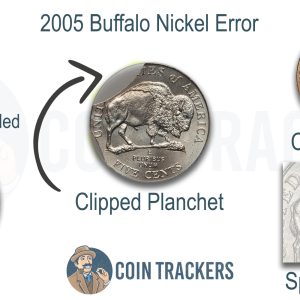
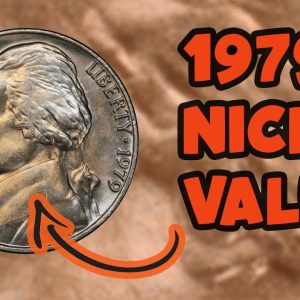
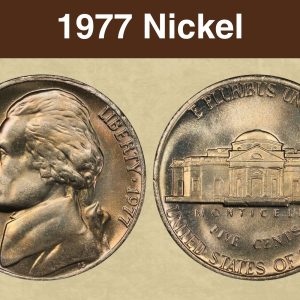
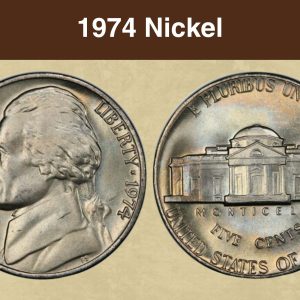
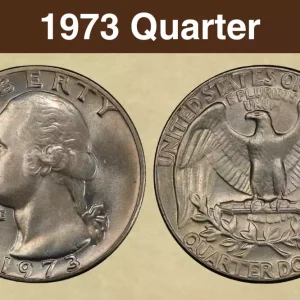
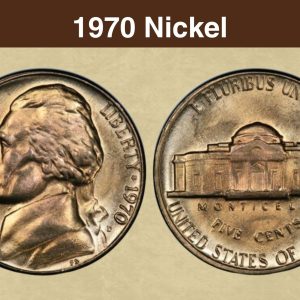
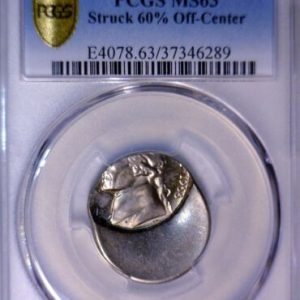
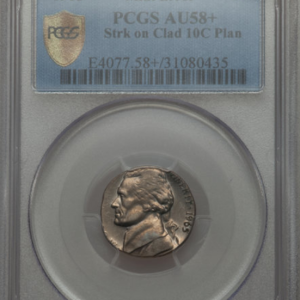
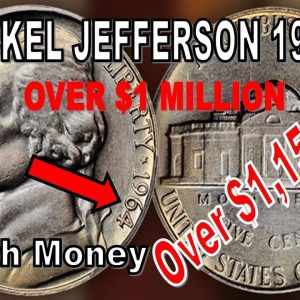
How much is a 1934 nickel worth with no mint mark?
A 1934 Buffalo nickel with no mint mark is a Philadelphia mint coin; its value ranges from a few dollars in circulated condition to over $100 or more for high-grade, uncirculated examples, with prices increasing significantly for rare high-grade specimens.
What is the most wanted buffalo nickel?
The rarest Buffalo nickel is the 1926-S, which has the lowest mintage of the series at just 970,000 coins. Other very rare Buffalo nickels include the 1937-D “Three-Legged” variety, caused by a die polishing error, and high-grade specimens of other key dates like the 1918-D overdate and 1924-S.
Where is the mint mark on a 1934 Buffalo Head nickel?
On the Buffalo Nickel, the mint mark is on the coin’s reverse side, below the denomination “FIVE CENTS.” The coin’s obverse features a striking portrait of a Native American chief facing to the right, adorned with feathers in his hair.
What nickel is worth $10,000 no mint mark?
In 1942 at Philadelphia. They made no mintmark nickels but they were not 35% silver they had no silver in them they were the regular copper nickel composition.